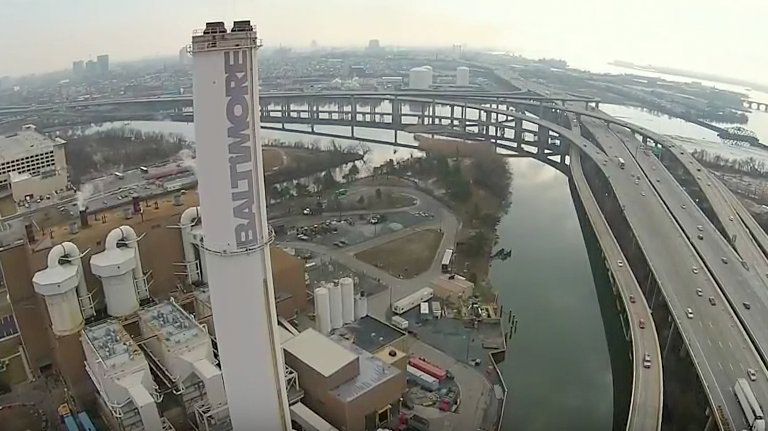By Chloe Taylor, Katrina Vaitkus, Justin Stacey, Zachary Felch, Amanda Speciale, Katie DeVoss, and Miranda Mlilo
Who we are:

We are a group of University of Maryland students majoring in Environmental Science and Policy. For our senior capstone project, we are researching the impact of offshore wind energy to help CCAN prepare for the upcoming public comment period for the proposed Ocean City US Wind Project. We will be creating a series of blog posts to provide information about different aspects of offshore wind and its impacts on greenhouse gas emissions, the economy, and wildlife. This is the second of our three part series.
There seems to be a common misconception that offshore wind energy might hurt Ocean City’s economy. This could not be further from the truth! In fact, research suggests that an offshore wind farm may actually bolster very important sectors of the economy such as tourism, real estate, and job creation.
Tourism and Real Estate
Many polls have surveyed beachgoers and gathered data about their vacationing preferences after the theoretical construction of offshore wind turbines. The results were generally positive for offshore wind, and showed either no change in beach preferences, or an increased likelihood that tourists would visit the area. For example, one Goucher poll from fall 2017 surveyed Marylanders to find out how the proposed offshore wind project would impact whether they choose Ocean City as a vacation destination. Out of 671 Marylanders, 75% of people said that the offshore wind farm would make no difference about where they choose to vacation. Additionally, 12% said that the presence of a wind farm might make them more inclined to visit, out of curiosity and interest.
This sentiment was further emphasized by Jessica Willi, Executive Director of the Block Island Tourism Council who stated that after the construction of the Block Island offshore wind farm, “We’ve definitely seen more people on the island that have come just to see the wind farm; we’ve had businesses sprout up on the island, boats taking people out just to see the wind farm.”
Additionally, a French study found that turbines will bring an increase in biodiversity and wildlife. This will expand the tourism market, bolstered by the desire to view, learn about, and interact with wildlife through activities like observational boating and diving around turbine foundations!
Furthermore, it is unlikely that there will be any negative impacts on real estate prices. While there is no existing data regarding real estate impacts from offshore wind farms, there are studies from onshore facilities located close to homes indicating that real estate will not be affected. Since offshore wind farms are located several miles off of the coast and have negligible visibility, data showing no effect from turbines located close to homes onshore would likely support a lack of impact for offshore turbines far from homes and other properties. In fact, benefits from tourism and lower electricity costs might even increase property values.
A 2013 study by Ben Hoen and colleagues found no statistical evidence that wind turbines affected nearby home prices in either the post-announcement/pre-construction or post-construction period. They found that while sale prices might temporarily decrease following the announcement of construction, labeled the “anticipation effect,” these decreases will wear off following construction.
Job Creation
US Wind plans to invest millions of dollars into Baltimore’s industrial and manufacturing sector. This substantial investment into the local economy is the root of the job opportunities for the city from the offshore wind project. Revitalization of the manufacturing industry could lead to the creation of hundreds of jobs in the greater Baltimore area, contributing to the 3,580 jobs the Public Service Commission of Maryland has required US Wind to create in the state. At every step of the process, employment opportunities abound. Skilled workers from numerous disciplines are essential to upgrade the facilities at Tradepoint Atlantic (at Sparrows Point) and other locations. An independent study for the Department of Energy forecasts the creation of up to 600 jobs and 33 million dollars in compensation during this stage alone. After the improvements are complete, over 150 tradespeople will likely be employed at the fabrication facility constructing steel jacket foundations — these jobs will continue even after the Maryland offshore wind project is complete as the East Coast’s offshore wind industry grows. Such professions can pay over 20 dollars an hour.
Not only does Baltimore stand to gain significant employment opportunities, so does Ocean City. As the closest city to the project, there is a unique chance to participate in the construction and upkeep of the wind turbines. Specialized workers from crane operators to electricians may be called on to help in the construction of the turbines while receiving payment upwards of 25 dollars an hour on average, if not more. Perhaps the most interesting job prospect is the chance to become employed as wind turbine service technicians. With a lifespan of 25 years, the turbines will require constant check ups and maintenance by locally-based technicians. Community colleges and technical schools are the key to getting a foot in the door with a 2-year degree or 1-year certification in the field. With a 96% job outlook in the coming years, the time is now to enter the profession.
Economic Benefits in Maryland
This project will also generate millions of dollars for Maryland’s economy, providing more jobs and emerging business investments. Maryland created the Maryland Offshore Wind Business Development Fund to encourage future project development. US Wind is required to contribute $6 million to this fund between 2017-2019, which will help other businesses emerge and profit within this novel industry. US Wind has pledged to invest 26.4 million dollars in upgrades to the Tradepoint Atlantic port facility, and an additional 51 million dollars in another steel facility, further solidifying their commitment to the local economy and job growth. US Wind is required to spend at least 19% of total development and construction costs within Maryland. Their studies estimate this in-state expenditure to be $610 million during development and construction, and another $744 million (valued in 2017 dollars) in the operation phase. This offshore wind farm will provide millions of dollars to the state’s economy and help advance business interests.
In addition to these state benefits, Marylanders do not need to fear exorbitant electricity costs. There may be some concern over how the state will offset the costs to build the project, such as raising the price of electricity. However, Maryland law prohibits residential rates from exceeding an additional $1.50 per month (valued in 2012 dollars) through 2040. For businesses and other non-residential payers, this increase is less than 1.4% annually. While this is a small increase, it is still advantageous to build the wind farm, as it helps the state comply with its renewable energy standards. Additionally, the cost of electricity should decrease over time as this project encourages future offshore wind projects in the pipeline. In one National Renewable Energy Laboratory study, they found the cost of electricity in the mid-Atlantic will decrease through 2027 with the installation of offshore wind projects currently in the pipeline. Compared to 2015 prices, the data reflect a 41-52% cost reduction in 2027 per megawatt hour to the mid-Atlantic! Thus, constructing this project will only have small rate increases to Maryland ratepayers, but will decrease future regional energy costs while meeting our renewable energy goals.
In conclusion, offshore wind has the potential to increase tourism and property values in Ocean City. The project will create jobs, stabilize electricity rates, and increase Maryland’s Taylor x revenue. Stay informed, get involved, and let our government know that you support offshore wind in the state of Maryland!
SIGN THIS PETITION TO THE BUREAU OF OCEAN ENERGY MANAGEMENT URGING THEM TO APPROVE OFFSHORE WIND IN MARYLAND!




 While the United States solar industry continues to grow, creating sustainable power and job opportunities nationwide, it has a long way to go before it is on par with European countries like
While the United States solar industry continues to grow, creating sustainable power and job opportunities nationwide, it has a long way to go before it is on par with European countries like